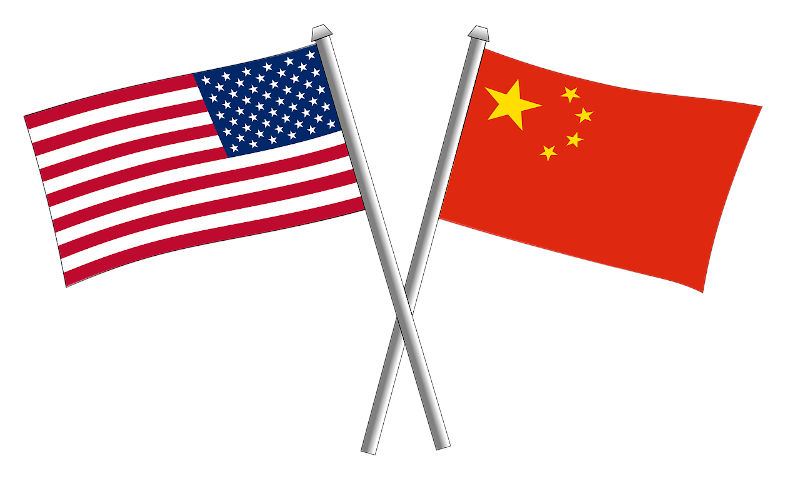US provocation of China over Taiwan
March 8, 2022
_On his visit to Taipei, Mike Pompeo, advocated on 28 February 2022 that the US government should immediately take necessary and long-overdue steps to do the right and obvious thing, that is to offer the Republic of China Americas diplomatic recognition as a free and sovereign country. .
_
The situation in Russia and Ukraine has spooked the world. The stability of Sino-US relations, the two largest powers and economies, is more important than ever for the cause of world peace. One issue that can make things very much worse is provocative action relating to Taiwan.
The dominant western narrative on Russia-Ukraine is negative on China for not being openly critical of Russia. There is little explanation via media sources that Chinas foreign policy is based of non-alignment which is embedded into its Five Principles of Peaceful Coexistence, which are in turn stated in the Chinese constitution and are therefore binding on Chinas diplomacy.
These principles consist of respecting the sovereignty and territorial integrity of all states, non-aggression against other states, non-interference in the internal affairs of other states, basing relations on equality and mutual benefit, and peaceful coexistence.
China is not the only country that has adopted non-alignment as its key foreign policy principle so has India which is why the latter is also cautious in its response to the Russia-Ukraine crisis. Other countries include Brazil, South Africa, and UAE. In fact, most developing countries subscribe to non-alignment.
Developing countries adopted non-aligned foreign policies originating in the 1950-60s because many of them were former colonies that had suffered under foreign domination. More than anything, they wanted to safeguard their newly gained independence and focus on developing their economies and advance their societies. They did not want to get sucked into the interests and punch-ups of the superpowers.
Just prior to the Russia-Ukraine crisis, was the 50th anniversary of the US president Richard Nixons visit to China in 1972, which opened the door to improving relations of the two countries. The US wanted China to be a foil against the former Soviet Union as part of its Cold War strategy, as well as influence Vietnam for America to withdraw from war there.
The condition for Sino-US rapprochement centred on settling differences, especially over Taiwan. To the Chinese, the issue of Taiwan is one left over from Chinas civil war and is a domestic problem to be resolved by the two sides.
The joint Shanghai Communiqu, signed during Nixons visit, started to redefine Sino-US relations by stating differences and areas of agreement between the two countries.
China reminds the US at the 50th anniversary that an area of agreement was the spirit of the five principles that countries with different systems could respect each other, work on common interests, not interfere in each others domestic affairs, and coexist in peace through mutual respect and cooperation.
In other words, the US agreed to the five principles as a proper way to conduct its foreign affairs. The Shanghai Communiqu was followed by several years of careful and extended negotiations over areas of differences that eventually resulted in the joint communiqus on the establishment of diplomatic relations in 1979 and on restricting arms sales to Taiwan in 1982.
The three documents together provided the basis of the agreed one-China principle and established the political foundation of Sino-US relations. Boiled down, it means that both sides agreed that there is only one China, Taiwan is a part of China, and the government of the Peoples Republic is the sole legitimate government that represents the whole of China.
On the issue of reunification, the US agreed to support peaceful resolution of the Taiwan issue as part and parcel of the one-China principle.
Hence, US and China may disagree on many things but the one issue that should not become a topic of contention is Taiwan. Departure from the one-China principle could lead to truly dire consequences and the US should not test Beijings resolve.
In recalling the diplomatic negotiations half a century later, the then secretary of state, Henry Kissinger, recently noted that the safety of the world depends on the two most advanced countries to remain a permanent dialogue and achieve the settlement of disagreements in a collaborative attitude. Those are the key issues of our time.
China has been unhappy with US naval ships frequent sailings through the Taiwan Strait, as well as arms sales to Taiwan which Beijing sees as violating the 1982 communiqu. While Beijing seems keen to use the occasion of the anniversary of Nixons visit to focus the USs attention on the three communiqus, the US seems to prefer not to be reminded of them. Moreover, there lurks the danger among hawkish politicians in America that the US to use Taiwan to irk Beijing without consideration of risks and consequences.
On his visit to Taipei, Mike Pompeo, the secretary of state under the Donald Trump administration, advocated on 28 February 2022 that the US government should immediately take necessary and long-overdue steps to do the right and obvious thing, that is to offer the Republic of China Americas diplomatic recognition as a free and sovereign country. He emphasised that this can no longer be ignored, avoided or treated as secondary.
The Russia-Ukraine crisis should remind all sides that Taiwan is a potential flashpoint, and it is in the interest of all to keep things in check within longstanding agreed parameters.

